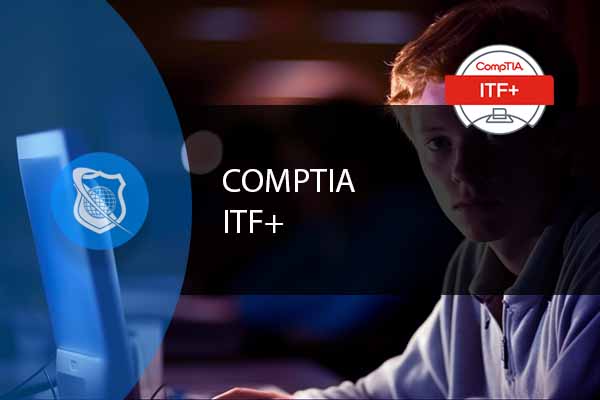Kerberos is not just a mythical three-headed dog guarding the gates of the underworld; it’s also the formidable guardian of security in Windows Active Directory. Understanding how Kerberos works is not only essential but also opens doors to mastering advanced networking concepts like authentication and delegation. In this comprehensive guide, we’ll delve deep into the world of Kerberos, demystifying its core functions and shedding light on its significance in modern network security.
The Importance of Kerberos
Solving Security Woes with Kerberos
In an era where the digital realm is an integral part of our lives, ensuring the security of our networks and sensitive data has become paramount. Kerberos, the ancient Greek guardian spirit’s namesake, has emerged as a modern-day hero in the battle against security woes. Let’s dive deeper into how Kerberos helps organizations mitigate these security challenges.
The Challenge of Unsecured Networks
Consider this scenario: you’re accessing your corporate network from a coffee shop’s public Wi-Fi hotspot. At first glance, this may seem like the epitome of an unsecured network. However, the truth is that any network, including your office LAN, can be considered unsecured. The reason lies in the need to manage and audit users and resources effectively.
In today’s interconnected world, it’s impossible to be completely sure that no malicious actors or external threats are targeting your network. This uncertainty highlights the significance of secure authentication, and this is precisely where Kerberos steps in.
Kerberos: The Guardian of Secure Sign-On
Kerberos shines as a secure sign-on implementation, and its relevance in modern networks cannot be overstated. Here’s how it solves security woes:
- Encryption: Kerberos encrypts the authentication process, ensuring that sensitive information like passwords and authentication tickets are transmitted securely over the network. This encryption acts as a formidable shield against eavesdropping and data breaches.
- Authentication: Only authenticated users can access network resources. Kerberos rigorously verifies the user’s identity, making it incredibly challenging for unauthorized individuals to gain access. It provides a robust authentication mechanism that thwarts most common forms of cyberattacks, such as password guessing and brute-force attacks.
- Single Sign-On (SSO): Kerberos serves as the foundation for SSO solutions. With SSO, users can access multiple services and resources with a single authentication, reducing the need to remember and manage multiple passwords. This not only enhances user convenience but also simplifies password management for administrators.
- Access Control: Beyond authentication, Kerberos facilitates effective access control. Users are granted access based on their authentication status and group memberships. This fine-grained control ensures that individuals only have access to the resources they need, minimizing the risk of data exposure or unauthorized changes.
- Administrative Efficiency: Active Directory, which relies on Kerberos, leverages its capabilities to streamline administrative tasks. User and security groups in Active Directory make it easier to grant or revoke access to resources on a larger scale. This simplification of resource management translates to time and cost savings for organizations.
The Power of Visualization
Understanding the flow of authentication within a network system is crucial for security administrators. By visualizing how users access data and resources, administrators can more efficiently troubleshoot and identify issues when they arise. Even with a basic understanding of Kerberos, IT professionals can navigate network security challenges more effectively.
In conclusion, Kerberos is not just a mystical guardian but a real-world solution to the security woes that organizations face in today’s digital landscape. Its encryption, authentication, and access control capabilities provide a robust defense against threats, all while simplifying administrative tasks. By embracing Kerberos and comprehending its workings, organizations can bolster their network security and navigate the complexities of the digital age with confidence.
Kerberos: Active Directory’s Guardian of Security
In the realm of network security, Active Directory (AD) stands as a pivotal and ubiquitous tool, especially in the Windows ecosystem. At the heart of AD’s security framework lies Kerberos, which acts as its stalwart guardian, ensuring the integrity and confidentiality of network communications. In this section, we will explore in greater detail the symbiotic relationship between Active Directory and Kerberos, shedding light on how this alliance fortifies network security.
The Role of Active Directory
Active Directory, often referred to as AD, serves as the central repository for network resources and user identities in a Windows-based environment. It plays a multifaceted role:
- User and Resource Management: AD facilitates the organized management of user accounts, group memberships, and network resources. This centralized directory simplifies administrative tasks, allowing for efficient provisioning and deprovisioning of user access.
- Authentication and Authorization: AD verifies user identities during logins and authorizes their access to network resources based on permissions and group memberships. It acts as the gatekeeper, ensuring that only authenticated and authorized users gain entry.
- Single Sign-On (SSO): AD supports Single Sign-On, a seamless authentication mechanism that allows users to access multiple services and resources with a single login. This not only enhances user convenience but also strengthens security by reducing the need to manage multiple passwords.
Kerberos and Active Directory: A Synergetic Bond
Kerberos is the native authentication protocol in Active Directory, and this integration forms the cornerstone of AD’s security architecture. Here’s how Kerberos reinforces AD’s capabilities:
- Secure Authentication: Kerberos employs strong encryption to secure the authentication process. When a user logs in, their credentials, such as passwords, are encrypted, rendering them unreadable to potential eavesdroppers. This cryptographic protection shields sensitive information during transmission.
- Ticket-Based Authentication: Kerberos operates on a ticket-based system. Users receive tickets upon successful authentication, which grant access to specific resources. These tickets are short-lived and can be revoked if necessary, enhancing security by limiting exposure.
- Access Control: Active Directory leverages Kerberos’ authentication outcomes to enforce access control. Users are granted permissions based on their authentication status and group memberships. This fine-grained control ensures that users only have access to the resources necessary for their roles, mitigating the risk of unauthorized access.
- Efficient Resource Management: Kerberos makes resource management more efficient within AD. The use of user and security groups streamlines the process of granting and revoking access. Administrators can easily assign permissions to groups rather than individual users, reducing administrative overhead.
- Auditing and Accountability: The integrated nature of Kerberos and Active Directory facilitates comprehensive auditing and accountability. Detailed logs track authentication and access events, allowing administrators to monitor user activities and investigate security incidents effectively.

IT User Support Specialist Career Path
View our comprehensive training series covering all the key elements and certifications needed to successfully excel in an IT User Support Specialist job role.
Strengthening Network Security
In the ever-evolving landscape of cybersecurity threats, Active Directory and Kerberos stand as pillars of defense. Together, they ensure that network access remains secure, streamlined, and manageable. This partnership empowers organizations to navigate the complexities of modern network environments with confidence, knowing that their data and resources are protected by a robust security infrastructure.
In conclusion, Active Directory’s reliance on Kerberos as its native authentication protocol exemplifies the adage, “You’re only as strong as your weakest link.” By choosing Kerberos as its guardian, Active Directory fortifies its security foundation, providing organizations with the tools needed to combat security challenges effectively in today’s interconnected world.
Understanding Kerberos Basics
The Secure Authentication Protocol
At its core, Kerberos is a secure authentication protocol designed to facilitate single sign-on and secure data transmission over a network. Beyond its authentication prowess, Kerberos excels as an access control tool. Only authenticated users gain access to network resources, and this is further streamlined through the use of user and security groups in Active Directory, making resource management a breeze.
Basic Authentication with Kerberos
The Three Key Players
Authentication, in any context, involves three essential actors:
- The Client/User: Initiates the request to access a network resource.
- The Resource: The target network resource that the user wants to access.
- The Key Distribution Center (KDC): Often referred to as the Domain Controller, the KDC serves as the authentication authority.
Distributed Authentication Workload
Kerberos has a unique approach to authentication, where the client shoulders the majority of the processing burden. This distributed workload ensures that authentication happens securely and reliably across the network. The process unfolds as follows:
- The client constructs an authenticator, containing crucial information like date and time.
- This authenticator is sent to the KDC (Domain Controller), where the user’s identity is verified.
- Kerberos employs the user’s password as an encryption key, which the Domain Controller can see in clear text. If the authenticator can be decrypted successfully, there’s no need to use it again; instead, a ticket-granting ticket (TGT) can be created.
- The Domain Controller encrypts the user’s information and sends it back to the client, which stores it in a specialized memory area known as the Kerberos Tray.
Transmitting Data with Kerberos
Requesting and Authorizing Tickets
The authentication process continues as the client logs on and requests a ticket from the Key Distribution Center. The KDC decrypts the ticket using its key and provides the client with a ticket for the desired file server. This ticket is stored in the client’s Kerberos tray.
But it doesn’t end there. The client sends a copy of this ticket to the Domain Controller, which generates another ticket. This new ticket, along with a request to access the resource, is sent to the file server. The file server, using the client’s username and group membership, determines the user’s rights and permissions.
To ensure ongoing access, the client must periodically resend its certificate to the file server.
Network Administrator Career Path
This comprehensive training series is designed to provide both new and experienced network administrators with a robust skillset enabling you to manager current and networks of the future.
Unveiling the Simplicity of Kerberos: A Step-by-Step Example
Understanding the Kerberos authentication process may seem daunting at first, but breaking it down into a step-by-step overview can reveal its underlying simplicity. In this practical example, we will illustrate how Kerberos works using a common scenario.
Scenario: John, an employee at a company called TechCorp, wants to access a shared folder on the company’s server securely.
Step 1: John’s Authentication Request
- John logs in to his workstation and attempts to access the shared folder on the server.
Step 2: Constructing the Authenticator
- John’s workstation constructs an authenticator, which includes:
- Date and time of the request.
- Some other information, such as a session identifier.
Step 3: Contacting the Key Distribution Center (KDC)
- John’s workstation sends the authenticator to the Key Distribution Center (KDC), which is often the Domain Controller in a Windows environment.
Step 4: Verification at the KDC
- The KDC verifies John’s identity by decrypting the authenticator using his password. The KDC can do this because it knows John’s password in clear text.
- If the authenticator can be decrypted successfully, it means John’s identity is confirmed.
Step 5: Ticket-Granting Ticket (TGT)
- Instead of continuously using the password for subsequent interactions, the KDC creates a special credential called a Ticket-Granting Ticket (TGT). This TGT is encrypted and includes John’s identity information.
Step 6: The Kerberos Tray
- The KDC sends the TGT back to John’s workstation, which stores it in a special area of memory known as the Kerberos Tray.
Step 7: Accessing the Shared Folder
- John’s workstation, armed with the TGT, now requests access to the shared folder on the server.
- The workstation sends a copy of the TGT to the KDC, requesting a service ticket for the server.
Step 8: Obtaining a Service Ticket
- The KDC creates a service ticket for the file server, encrypted with a key known only to the server. This service ticket grants John access to the server.
- The KDC sends the service ticket to John’s workstation.
Step 9: Access Granted
- John’s workstation presents the service ticket to the file server when accessing the shared folder.
- The file server accepts the ticket, decrypts it using its secret key, and checks John’s username and group membership to determine the access rights.
Step 10: Periodic Reauthorization
- To maintain access, John must periodically reauthorize himself with the file server by presenting the service ticket.
Step 11: Simplifying Authentication
- While the process may seem complex under the hood, John experiences seamless access to the shared folder without the need to enter his password repeatedly.
In this step-by-step example, we’ve demonstrated how Kerberos simplifies authentication while maintaining robust security. John’s initial login results in the creation of a TGT, which allows him to access various resources without exposing his password. This practical scenario showcases the power of Kerberos in securing network access without compromising user convenience.
CompTIA ITF+ Training
Ready to kickstart your IT career but don’t know where to begin? Our ITF+ course is your perfect starting point! Master the essential IT skills you need to shine in the tech world. From hardware and software to programming and security, we’ve got it all covered. This comprehensive course is designed to help you ace the CompTIA FC0-U61 IT Fundamentals (ITF+) exam with flying colors.
Final Thoughts
In the world of network security, understanding the flow of authentication is fundamental. Kerberos stands as a formidable shield, securing access to vital resources. By gaining even a basic understanding of how Kerberos works, administrators and IT professionals can troubleshoot network issues more effectively and keep their systems resilient against security threats. In the ever-evolving landscape of cybersecurity, knowledge of Kerberos remains a potent weapon in the arsenal of network defenders.
Frequently Asked Questions Related to Kerberos
What is Kerberos authentication, and why is it important in Windows Active Directory?
Kerberos authentication is a secure network protocol used for user authentication in Windows Active Directory. It’s crucial because it provides a strong authentication mechanism, encrypts communication, and enables Single Sign-On (SSO), enhancing security and user convenience.
How does Kerberos prevent unauthorized access in Active Directory?
Kerberos prevents unauthorized access by encrypting authentication requests and responses. It uses tickets and keys to ensure that only authenticated users can access resources, effectively thwarting unauthorized users.
What is the difference between Kerberos authentication and traditional password-based authentication?
Kerberos authentication differs from traditional password-based authentication by using tickets and encryption. In Kerberos, the user’s password is not sent over the network, making it more secure against eavesdropping and password-related attacks.
What are the common issues or challenges organizations face when implementing Kerberos in Active Directory?
Organizations often encounter issues with Kerberos related to time synchronization, service principal names (SPNs), and configuration errors. Ensuring proper configuration and monitoring can help mitigate these challenges.
Is Kerberos the only authentication protocol in Active Directory, or are there alternatives?
While Kerberos is the primary authentication protocol in Active Directory, there are alternatives like NTLM (NT LAN Manager). However, NTLM is considered less secure than Kerberos and is primarily used for backward compatibility.


























